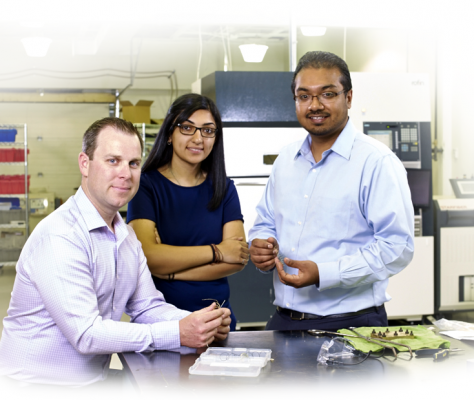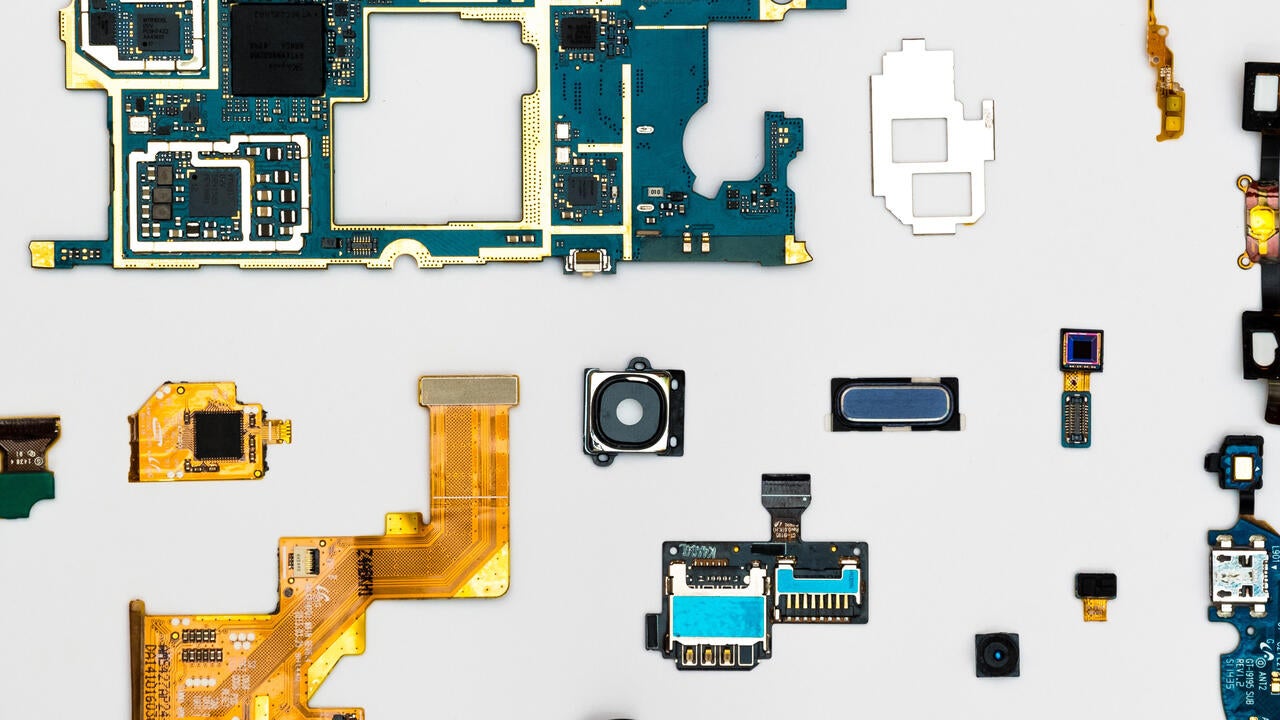Game-changing breakthroughs are nothing new for Waterloo Engineering. Right now, students, faculty members and alumni are revolutionizing hardware development, tapping into unlimited sources of clean energy, working to save healthcare dollars spent on heart disease treatment and much more.
Take Multiple Memory Material™. Like many innovations, it came about through unintended consequences. As a doctoral candidate, Ibraheem Khan (MASc ’07, PhD ’10, Mechanical) working with Norman Zhou, a Waterloo mechanical and mechatronics engineering professor, realized the lasers and electron beams used as welding tools were changing the properties of the materials he was joining.
However, the properties they gained were highly intriguing: the ability to remember more than one shape and apply specific amounts of force in specific locations. Inspired by Waterloo’s inventor-owned intellectual property policy, Khan and Zhou launched Smarter Alloys to commercialize the discovery.

Waterloo Engineering alumni Michael Kuntz (BASc ’01, PhD ’06, Mechanical), Shysta Ismaili (BASc ’15, Mechanical), Ibraheem Khan (MASc ’07, PhD ’10, Mechanical) and the rest of the Smarter Alloys team are coming up with different ways to incorporate Multiple Memory Material™ in everything from medical devices to golf equipment.
One of the company’s latest ventures is developing wires for orthodontic braces that promise to cut treatment time dramatically. Anyone who has worn braces knows just how long the process can be. Because different teeth require different degrees of correction, dentists swap brace wires every few months, increasing or decreasing the stiffness to target different teeth. Smarter Alloys’ SmartArch™ wires change all that, providing a single wire that applies exactly the right force to each tooth at the same time.
The biomechanically optimized archwire was launched to great enthusiasm at May 2015’s annual session of the American Association of Orthodontists in San Francisco. SmartArch has also caught the attention of someone closer to home — Khan’s wife. The newly minted dentist is interested in bringing the technology to the Guelph dental clinic she recently joined.
Check out our September 2015 edition of WEAL, our Waterloo Engineering Alumni Letter, for more great stories.
Related stories

Engineering master's student Nayeema Nonta (left), one of the three paper authors, and her supervisor, Dr. Sirisha Rambhatla, in a large server room with the computer power needed to develop their new LLM training technique. (University of Waterloo)
Read more
Making powerful AI more accessible to everyone
Waterloo researchers develop highly efficient AI training system that paves the way for cheaper, greener “intelligent partners”

Read more
'We're stepping out of our silos'
Engineering researchers team up to tackle the plastics pollution problem with microbial innovation and engineering design

Read more
Waterloo researchers rank among the most influential in the world
15 University of Waterloo researchers have been named to the annual Highly Cited Researchers™ list for significant contributions to their specific fields of research
Read
Engineering stories
Visit
Waterloo Engineering home
Contact
Waterloo Engineering





